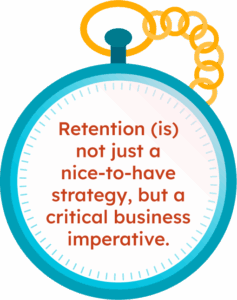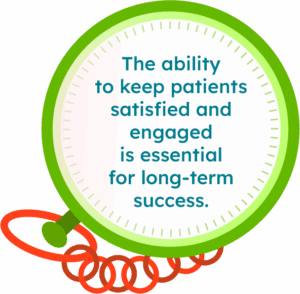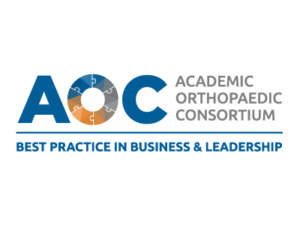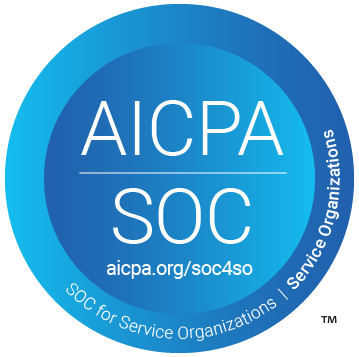Picture this: your healthcare organization is like a bucket with a slow leak. You’re constantly pouring in new patients through marketing campaigns, referral programs, and community outreach efforts, but at the same time, patients are quietly slipping away through the cracks. Patient churn isn’t just a minor inconvenience—it’s a financial hemorrhage.
The statistics are sobering. The average healthcare entity has a growth rate of 45% but a churn rate of 48%, meaning that for every new patient gained, healthcare organizations are losing more than one existing patient. This represents a massive drain on resources and revenue that many organizations treat as an inevitable cost of doing business.
The True Cost of Patient Churn Goes Beyond Revenue
 When we discuss patient churn in healthcare, we’re not just talking about lost appointments or missed revenue from individual visits. The financial impact runs much deeper than most healthcare organization leaders realize. Research shows that it’s 5-25 times more expensive to acquire a new patient than it is to keep an existing one, making retention not just a nice-to-have strategy, but a critical business imperative.
When we discuss patient churn in healthcare, we’re not just talking about lost appointments or missed revenue from individual visits. The financial impact runs much deeper than most healthcare organization leaders realize. Research shows that it’s 5-25 times more expensive to acquire a new patient than it is to keep an existing one, making retention not just a nice-to-have strategy, but a critical business imperative.
Consider the hidden costs that accumulate with every patient who walks away. There’s the initial marketing spend that brought them in, the time invested in building their medical history, and the staff resources spent on onboarding. When patients leave, the potential future revenue from ongoing treatments or procedures, as well as all those initial investments, vanish instantly.
But the damage extends beyond immediate financial losses. Patient churn creates operational inefficiencies that ripple through entire healthcare organizations. Staff spend disproportionate time on new patient intake procedures rather than deepening relationships with existing patients. Providers lose the clinical continuity that leads to better health outcomes. And perhaps most importantly, churned patients often share their negative experiences with friends and family, creating a multiplier effect that can damage your organization’s reputation and make future patient acquisition even more challenging.
Why Patients Leave: The Root Causes of Healthcare Churn
Understanding why patients leave is the first step in mitigating churn. Several factors contribute to the increase in churn rate in the healthcare industry, including inadequate communication, subpar customer experience, and overall dissatisfaction with the treatment. These aren’t isolated incidents—they’re systemic issues that plague healthcare organizations across the spectrum.
Communication breakdowns represent one of the most significant drivers of patient churn. When patients feel uninformed about their treatment plans, confused about billing, or ignored when they have questions or feedback, they naturally begin looking for alternatives. This communication gap is particularly damaging because it’s often entirely preventable with the right systems and processes in place.
Poor customer experience encompasses everything from long wait times and difficulty scheduling appointments to impersonal interactions with staff and confusing office procedures. In an era where patients increasingly expect the same level of service they receive from other industries, healthcare organizations that fail to prioritize patient experience find themselves at a significant disadvantage.
Treatment dissatisfaction can stem from clinical outcomes, but it’s often tied to expectation management and patient education. When patients don’t understand their treatment options, feel rushed during appointments, or believe their concerns aren’t being adequately addressed, they’re likely to seek care elsewhere.
The referral process presents another critical churn point that many organizations overlook. Even when patients do contact the referred doctor, 40% of patients don’t make a follow-up appointment. This statistic highlights how fragile patient relationships can be and how easily they can be disrupted during transitions between providers or specialists.
The Compounding Effect: When Churn Becomes Chronic
Healthcare organizations often underestimate how patient churn compounds over time. As patient volume decreases, organizations typically respond by increasing marketing spend to attract new patients, which drives up patient acquisition costs and puts additional pressure on already strained resources.
This reactive approach to patient management creates what industry experts call the “churn trap” or “the growth paradox.” Organizations become so focused on replacing lost patients that they fail to address the underlying issues causing patients to leave in the first place. Meanwhile, the remaining patients may experience declining service quality as staff and resources are diverted to acquisition efforts, potentially accelerating churn rates even further.
The impact on staff morale and retention cannot be ignored either. Healthcare workers who constantly see patients leaving may become demoralized, leading to higher staff turnover rates that further destabilize patient relationships. This creates a downward spiral where instability feeds patient churn, which in turn creates more operational challenges.
The Strategic Imperative: Making Retention a Priority
Successfully addressing patient churn requires a fundamental shift in how healthcare organizations think about patient relationships. Rather than viewing patients as individual transactions, successful organizations recognize that each patient represents a long-term relationship with significant lifetime value.
Healthcare systems that excel at patient retention understand that it requires systematic attention and dedicated resources. Organizations that make a top leader accountable for patient retention have a much greater likelihood of success–ideally, someone who can drive change across departments and ensure that retention strategies are properly implemented and maintained.
The most effective retention strategies focus on proactive patient engagement rather than reactive damage control. This means identifying at-risk patients before they churn, addressing concerns before they become deal-breakers, and continuously improving the patient experience based on feedback and data analysis.
Building a Patient-Centric Retention System
Creating an effective patient retention system requires a comprehensive approach that touches every aspect of the patient experience. The foundation starts with understanding your current churn patterns through data analysis. To calculate your churn rate, take the number of patients who churned during the specific time frame, divide it by the total number of patients you had at the beginning of that period, and multiply the result by 100.
However, simply calculating churn rates isn’t enough. Healthcare organizations need to dig deeper to understand the “why” behind patient departures. This requires robust systems for collecting and analyzing patient feedback, tracking engagement patterns, and identifying early warning signs of dissatisfaction.
Communication emerges as the cornerstone of successful retention strategies. Patients who feel heard, informed, and valued are significantly less likely to seek care elsewhere. This means implementing systems for regular patient check-ins, providing clear information about treatment plans and costs, and ensuring that patient concerns are addressed promptly and thoroughly.
The patient experience extends far beyond clinical interactions. From the moment patients first contact your organization to their ongoing relationship with your team, every touchpoint represents an opportunity to strengthen or weaken the relationship. Organizations that excel at retention pay attention to seemingly minor details like appointment scheduling ease, waiting room comfort, billing clarity, and follow-up communications.
Using Data to Drive Retention
Healthcare organizations today have access to unprecedented amounts of data about patient behavior, preferences, and satisfaction levels. The challenge lies in transforming this data into actionable insights that can prevent churn before it happens, providing the foundation for evidence-based retention strategies.
Patient feedback systems play a crucial role in retention efforts, but only when healthcare organizations design them to capture actionable insights and trigger appropriate responses. Many organizations collect patient feedback but fail to act on it systematically, missing opportunities to address issues that could prevent churn.
The Retention Dividend: Long-Term Benefits Beyond Revenue
While the immediate financial benefits of improved patient retention are compelling, the long-term advantages extend far beyond revenue protection. Organizations that engage in retention strategies are more likely to benefit from patient loyalty, resulting in improved adherence to medical advice and treatment plans. This creates a positive feedback loop where better retention leads to better clinical outcomes, which in turn drives higher patient satisfaction and further reduces churn.
Long-term patients also become natural advocates for your organization, generating referrals and positive reviews that can significantly reduce marketing costs. These loyal patients often have higher lifetime values, require less onboarding time, and are more likely to comply with treatment recommendations.
From an operational perspective, lower churn rates create more predictable revenue streams and reduce the constant pressure to replace lost patients. This allows organizations to focus more resources on service improvement and clinical excellence rather than perpetual patient acquisition.
The Future of Patient Retention
As healthcare continues to evolve and patient expectations rise, the importance of systematic retention strategies will only grow. The key to success lies in viewing patient retention as an ongoing process rather than a one-time fix. It requires continuous monitoring, regular strategy adjustments, and a commitment to understanding and responding to changing patient needs.
 Healthcare organizations that invest in robust patient feedback systems, implement data-driven retention strategies, and prioritize patient experience at every touchpoint will find themselves with a significant competitive advantage. In an industry where trust and relationships are paramount, the ability to keep patients satisfied and engaged is essential for long-term success.
Healthcare organizations that invest in robust patient feedback systems, implement data-driven retention strategies, and prioritize patient experience at every touchpoint will find themselves with a significant competitive advantage. In an industry where trust and relationships are paramount, the ability to keep patients satisfied and engaged is essential for long-term success.
The hidden cost of patient churn may be substantial, but the good news is that it’s largely preventable. With the right strategies, systems, and commitment to patient-centered care, healthcare organizations can stop the bleeding and build the kind of loyal patient base that drives sustainable growth and success.











